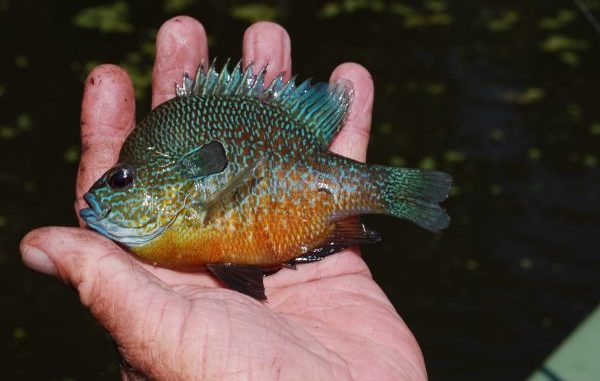
Fishermen call two species of bream “sunperch:” the longear sunfish and the dollar sunfish. Both are brilliantly jewel-like in coloration, plastered in red-oranges and yellows and covered with turquoise reticulations.
Besides the fact that the dollar sunfish has a deeper body, they are best told apart by inspecting the large flaps extending rearward from their gill covers.
In dollar sunfish, the flaps are edged in turquoise, and in longears the margins are white or yellow. The flap on longears also is more elongated, rather than being squarish in shape. Longear sunfish also grow slightly larger than dollar sunfish, although both are on the margin of being barely large enough to clean.
Probably the best way to determine which species one has is based on where it was caught. Longears are fish of flowing, clear water, upland streams. Dollar sunfish prefer lowland habitats, such as sluggish bayous, swamps and natural lakes.
Both species — especially longears, which prefer clean sandy bottoms in quite shallow waters near the edges of streams — look for firm bottom on which to construct their nests. Often several nests will be seen close together, but longears don’t nest in colonies as dollar sunfish do.
Males of both species are quite spunky and can be seen in clear water repeatedly dashing to attack large artificial lures that appear to them to threaten their nests.
Both species spawn from May through August.
Both species, but particularly the dollar sunfish that shares the same habitat with bluegills, will eat the eggs of their larger relatives. As substantial numbers of protective male bluegills are caught from a colony by fishermen, these smaller sunfish move in to grab unprotected eggs.
When fishermen begin catching sunperch from a bluegill bed, it is a sign that the bluegill fishing on that bed will play out soon. (More male bluegills will usually repopulate the bed within days.)
Sunperch are small, with longears growing slightly larger than dollars. Only the largest are large enough to fillet, but they are delicious eaten off the bone.